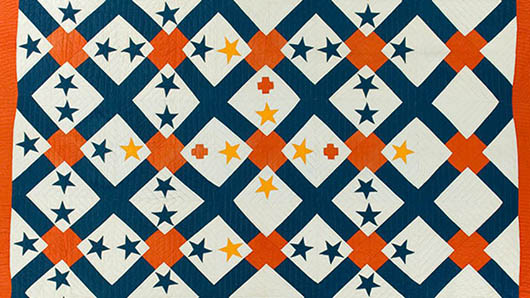LINCOLN, Neb. – A new exhibition at the International Quilt Study Center and Museum will explore the role quilts had throughout history during wartime. “Covering the War: American Quilts in Times of Conflict” opens at UNL’s Quilt House, 1533 N. 33rd St., March 6 and will be on display through Nov. 21.
“Covering the War” features 10 quilts spanning 150 years of history, beginning with the Mexican-American War through Operation Iraqi Freedom. While other exhibitions have focused on quiltmaking during a single war, few have examined the similarities of quilts from multiple wars.
“These wars altered life on the home front significantly, and by looking at quilts from each war, we can see how personal these effects were to ordinary people,” said Jonathan Gregory, assistant curator of exhibitions. “The quilts in ‘Covering the War’ give glimpses into these stories, and how women’s patriotic and charitable work during the wars gave them expanded postwar opportunities.”
The exhibition will also showcase two recent acquisitions to the center’s collection. The first is an 1898 album quilt from the Spanish-American War. The quilt was donated by Bill Volckening, a rising quilt collector, and is inscribed with embroidered names of President William McKinley and other high-ranking political and military officials.
The second quilt, “Madison Township Memorial of the World War,” was made circa 1918. The piece features blue stars to honor soldiers serving in the war from Madison Township, Indiana, while gold stars remember those who died in the war. Red crosses on the quilt honor nurses who served in the war.
“Every time we get a significant quilt like this, it adds great value to our collection, because it’s a representation of history,” said Carolyn Ducey, the center’s curator of collections. “It’s a tangible link to an important part of our past.”
The museum also borrowed a rare U.S. Sanitary Commission quilt from the collection of the Barbara Knapp Trust for display. According to an inscription on the album quilt, it was “presented to the Soldiers (cq)” on behalf of the Sanitary Commission. Though commission volunteers made thousands of quilts during the Civil War, only a handful – including this one – are known to still exist bearing the commission’s stamp.
The museum is open 10 a.m. to 4 p.m. Tuesday through Saturday. For more information, go to http://www.quiltstudy.org .


